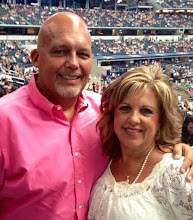I think it’s interesting that we tend to bookend a person's life
with the dates of birth and death. Yet it’s the dash between the dates that
determines our Legacy.
We gathered together last Thursday to celebrate the life of
Laura's mother - Betty Jo Marsh, our Meme. Meme’s life – the dash between the
dates that she lived among us was long and full.
In fact, her dash was a legacy life: Her life was a
blessing to all of us while she was with us, and it will continue to be a
blessing for generations to come.
In the bulletin for her service we printed Proverbs 31:10-31.
All too often we read that description and it seems rather abstract and
removed. But for those of us who knew Betty we saw a Proverbs 31 woman up close
and personal.
An
excellent wife, who can find?
For her worth is far above jewels.
The heart of her husband trusts in her, and he will have no lack of gain.
She does him good and not evil all the days of her life.
Strength and dignity are her clothing, and she smiles at the future.
She opens her mouth in wisdom, and the teaching of kindness is on her tongue. She looks well to the ways of her household, and does not eat the bread of idleness.
For her worth is far above jewels.
The heart of her husband trusts in her, and he will have no lack of gain.
She does him good and not evil all the days of her life.
Strength and dignity are her clothing, and she smiles at the future.
She opens her mouth in wisdom, and the teaching of kindness is on her tongue. She looks well to the ways of her household, and does not eat the bread of idleness.
Her children rise up
and bless her;
her husband also, and he praises her, saying:
her husband also, and he praises her, saying:
“Many
daughters have done nobly, but you excel them all.”
Charm is deceitful and beauty is vain,
but a woman who fears the Lord, she shall be praised. Give her the product of
her hands, and let her works praise her in the gates.
MeMe
lived a Legacy Life: a life that was a blessing to all of us while she was with
us and that we will be a blessing for generations to come.
And
because of the life she lived,
Her children – and their spouses - rise up and bless her;
And her 11 Grandchildren
- and their spouses - rise up and
bless her;
And her 21 Great
Grandchildren rise up and bless her;
Her husband also, and he praises her.
Her finger prints are all over our homes and our hearts.
Let us walk in the Light of Meme’s Legacy!

